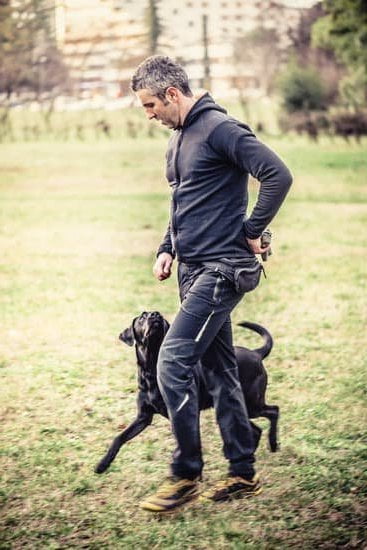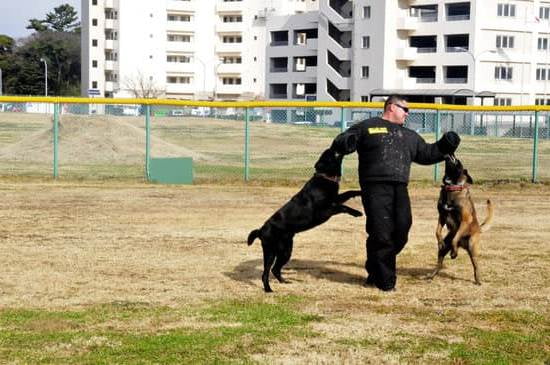Obedience dog training is essential for the well-being and safety of your furry friend. Whether you have a new puppy or an older dog, teaching them basic obedience commands is crucial for their socialization and overall behavior.
In this article, we will delve into the importance of obedience dog training, basic commands every dog owner should know, choosing the right training method, effective tips for at-home training, common mistakes to avoid, the role of positive reinforcement, advanced techniques for experienced handlers, and how obedience training can improve behavior and bonding with your pet.
Obedience training plays a vital role in ensuring that your dog listens to your commands and behaves appropriately in various situations. It also strengthens the bond between you and your pet while promoting good behavior. By understanding the significance of obedience training, you can set realistic expectations and work towards creating a harmonious relationship with your canine companion.
In the following sections, we will explore different aspects of obedience dog training, from basic commands to advanced techniques. Whether you are a first-time pet owner or an experienced handler looking to refine your skills, this comprehensive guide aims to provide valuable insights into effective obedience dog training methods.
Basic Obedience Commands Every Dog Owner Should Know
When it comes to obedience dog training, there are several basic commands that every dog owner should be familiar with. These commands serve as the foundation for effective communication and control between you and your furry friend. Whether you are a first-time dog owner or have years of experience, mastering these basic obedience commands is essential for a well-behaved and obedient pet.
Sit
The “sit” command is one of the most fundamental commands in obedience dog training. Teaching your dog to sit on command can help prevent jumping on people, begging for food, and other unwanted behaviors. To teach your dog to sit, hold a treat close to their nose and slowly move your hand up, causing their head to follow the treat and their bottom to lower. When they are in the sitting position, say “sit” and give them the treat.
Stay
The “stay” command is crucial for keeping your dog safe in various situations. Teaching your dog to stay means that they will remain in place until given a release command. Start by having your dog sit or lie down, then give the “stay” command while using a hand signal such as holding up your palm toward them. Gradually increase the distance between you and your dog while practicing the stay command.
Come
The “come” command is essential for calling your dog back to you, especially in emergency situations. Teaching this command involves using positive reinforcement such as treats or praise. Begin in a quiet environment with minimal distractions, call out your dog’s name followed by the “come” command while patting your legs or clapping to encourage them to come to you. When they respond correctly, be sure to reward them with treats and affection.
Mastering these basic obedience commands is an important step towards building a strong foundation for effective communication and behavior control with your canine companion through obedience dog training.
Choosing the Right Obedience Training Method for Your Dog
When it comes to obedience dog training, it is essential to choose the right training method that will work best for your pet. There are various approaches to obedience training, including positive reinforcement, clicker training, and electronic collar training. Before deciding on a method, it’s important to take into consideration your dog’s breed, age, and temperament. For example, while positive reinforcement works well for most dogs, some breeds may respond better to more structured training methods.
Positive reinforcement is one of the most popular and effective obedience dog training methods. This approach involves rewarding your dog with treats, praise, or toys when they exhibit the desired behavior. The use of positive reinforcement can strengthen the bond between you and your pet while making the learning process enjoyable for your furry companion.
Another important factor to consider when choosing the right obedience training method for your dog is your own comfort level and experience as a trainer. Some methods may require more patience and consistency from the owner, while others may be better suited for owners with previous experience in obedience dog training. Taking these factors into account can help determine which method will yield the best results for both you and your dog.
| Obedience Training Method | Best Suited For |
|---|---|
| Positive Reinforcement | Most dogs; Owners seeking a bond-strengthening approach |
| Clicker Training | Dogs with an affinity for auditory cues; Owners with experience using clickers |
| Electronic Collar Training | Dogs needing long-distance control; Experienced trainers familiar with proper collar usage |
Tips for Effective Obedience Dog Training at Home
Obedience dog training is crucial for teaching your furry friend how to behave in various situations. Whether it’s learning basic commands or advanced obedience techniques, training at home can be a rewarding experience for both you and your pet. Here are some tips to help make your obedience dog training sessions effective and enjoyable.
Consistency is key when it comes to obedience dog training. Make sure that everyone in the household uses the same commands and rules so as not to confuse your dog. Repetition is also important, as dogs learn through consistent practice and reinforcement of desired behaviors.
Another tip for effective obedience dog training at home is to keep training sessions short and frequent. Dogs have short attention spans, so aim for multiple short sessions per day rather than one long session. This will help keep your dog engaged and prevent them from becoming bored or overwhelmed.
Incorporating positive reinforcement into your obedience dog training is essential. Rewarding good behavior with treats, praise, or playtime can motivate your dog to continue obeying commands. Additionally, using force or punishment during training can lead to fear or aggression in dogs, so it’s best to focus on positive reinforcement methods.
| Obedience Dog Training Tip | Explanation |
|---|---|
| Consistency | Using the same commands and rules throughout the household |
| Short, frequent sessions | Keeping training sessions brief and regular to maintain engagement |
| Positive reinforcement | Rewarding good behavior with treats, praise, or playtime to motivate dogs |
Common Obedience Training Mistakes to Avoid
One common mistake to avoid in obedience dog training is having unrealistic expectations. It’s important to remember that every dog is different and will learn at their own pace. Some may pick up commands quickly, while others may take longer to grasp the concept. Patience is key when it comes to obedience training, and expecting instant results can lead to frustration for both the owner and the dog.
Consistency Is Key
Another mistake to avoid in obedience dog training is inconsistency. Dogs thrive on routine and consistency, so it’s important for owners to be consistent with their commands and expectations. If one day a command means one thing and the next day it means something else, it can confuse the dog and make it harder for them to learn.
Avoid Using Punishment as a Primary Training Method
Using punishment as a primary method of obedience dog training is another mistake to avoid. While some level of correction may be necessary at times, relying heavily on punishment can lead to fear or aggression in the dog. Positive reinforcement, such as treats and praise, is generally more effective in shaping desired behaviors in dogs.
By being mindful of these common mistakes and taking a positive approach to obedience dog training, owners can set their dogs up for success and strengthen the bond between them. Obedience training should be a rewarding experience for both the owner and the dog, leading to better behavior and a stronger relationship overall.
The Role of Positive Reinforcement in Obedience Dog Training
Positive reinforcement is a crucial component of obedience dog training. This method focuses on rewarding desirable behaviors to encourage their repetition, rather than punishing unwanted behaviors. Using positive reinforcement not only helps to teach your dog obedience commands, but also strengthens the bond between you and your pet.
There are several ways to incorporate positive reinforcement into obedience dog training:
- Use treats: Small, easily consumable treats can be used as a reward for following commands such as sit, stay, and come.
- Verbal praise: Dogs respond well to verbal praise and affection. A simple “good boy” or “good girl” along with a pat on the head can go a long way in reinforcing positive behavior.
- Playtime: For some dogs, playtime with their favorite toy can be just as rewarding as treats. Incorporating play into training sessions can make learning fun for your dog.
It’s important to remember that timing is key when using positive reinforcement in obedience dog training. The reward should be given immediately after the desired behavior occurs, so your dog associates the action with the reward. Consistency and patience are also crucial when implementing this training method. With time and practice, your dog will learn to obey commands willingly and eagerly.
In addition to teaching obedience commands, positive reinforcement has been shown to improve overall behavior in dogs. By focusing on rewarding good behavior rather than punishing bad behavior, you can create a positive and trusting relationship with your pet. This approach also helps foster better communication between you and your dog, leading to a stronger bond based on mutual respect and understanding.
Advanced Obedience Training Techniques for Experienced Handlers
For experienced handlers who have mastered the basic obedience commands, there are advanced techniques that can take your dog’s training to the next level. These techniques require patience, consistency, and a deep understanding of your dog’s behavior and learning style. Here are some advanced obedience training techniques to consider:
- Proofing Commands: Once your dog has mastered basic commands like sit, stay, and come, it’s important to proof these commands in various environments and with different distractions. This means practicing the commands in public places, around other dogs, and in busy settings to ensure that your dog can obey no matter the circumstances.
- Agility Training: Agility training not only helps improve a dog’s physical fitness but also enhances their mental sharpness and responsiveness to commands. Setting up an agility course with hurdles, tunnels, weave poles, and other obstacles can challenge your dog’s obedience skills in a fun and interactive way.
- Scent Work: Teaching your dog scent work or nose work involves having them search for hidden items based on their scent. This type of training can improve focus, impulse control, and obedience as your dog learns to follow scent trails and locate specific objects.
These advanced obedience training techniques require dedication and commitment from both the handler and the dog. It’s essential to continue using positive reinforcement methods to motivate your pet during these more challenging exercises. With consistent practice and patience, advanced obedience training can strengthen the bond between you and your furry companion while further improving their behavior both at home and in public settings.
Remember that every dog is unique, so it’s important to tailor these advanced techniques to suit your pet’s individual needs and abilities.
How Obedience Dog Training Can Improve Behavior and Bonding With Your Pet
Obedience dog training is crucial not only for ensuring a well-behaved and obedient pet but also for strengthening the bond between you and your furry friend. By going through the basic obedience commands and choosing the right training method for your dog, you’re laying the foundation for a well-behaved canine companion.
The role of positive reinforcement in obedience dog training cannot be overstated, as it not only encourages good behavior but also helps in building trust and a positive relationship with your pet.
Training your dog at home can be a rewarding experience, but it’s important to be mindful of common obedience training mistakes to avoid. These include inconsistency, using punishment-based methods, and not being patient with your pet. By utilizing effective tips and techniques for obedience dog training at home, you’ll find that your efforts pay off in improved behavior and enhanced bonding with your pet.
For experienced handlers looking to take their dog’s obedience training to the next level, advanced techniques can provide new challenges and opportunities for growth. Whether it’s agility training or advanced commands, these activities can further strengthen the bond between you and your pet while enhancing their overall behavior and responsiveness. Ultimately, obedience dog training is not just about teaching commands; it’s about fostering a strong connection with your pet based on trust, communication, and mutual respect.

Welcome to the blog! I am a professional dog trainer and have been working with dogs for many years. In this blog, I will be discussing various topics related to dog training, including tips, tricks, and advice. I hope you find this information helpful and informative. Thanks for reading!





